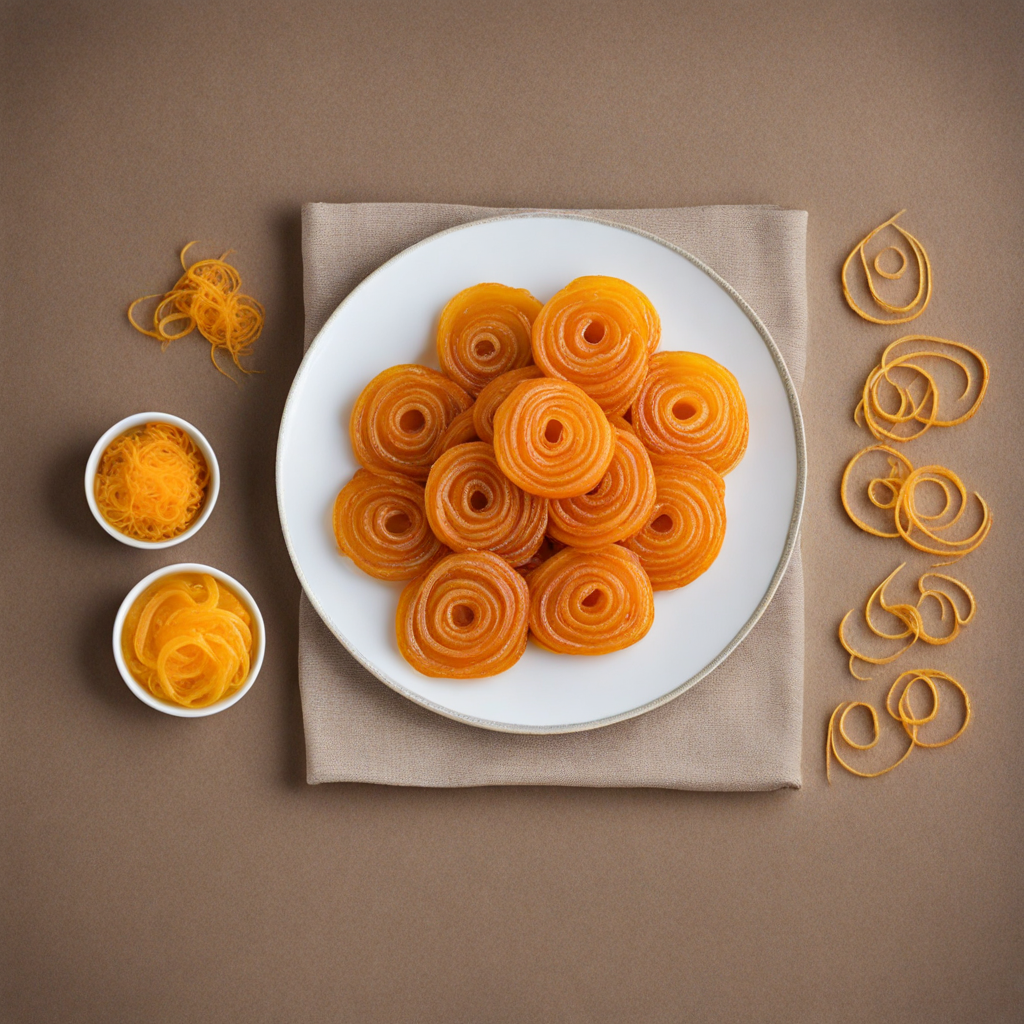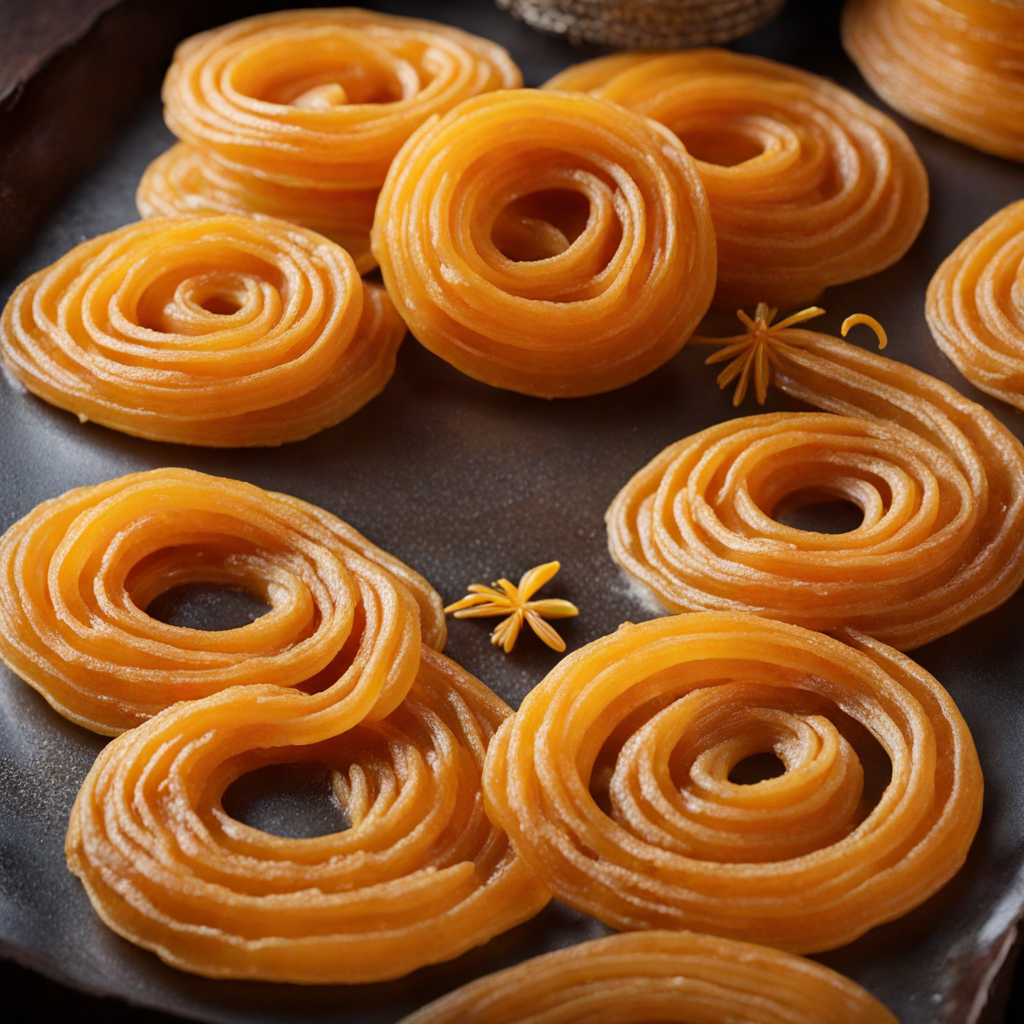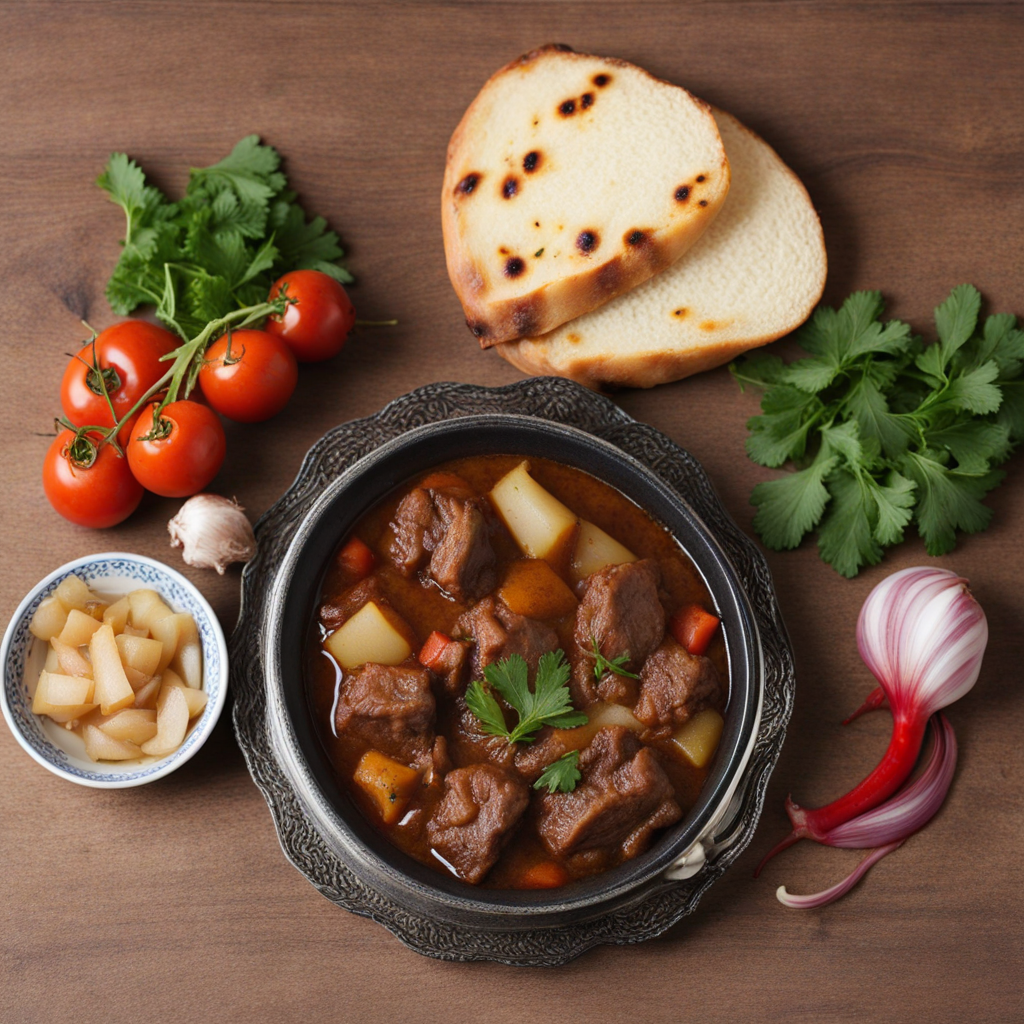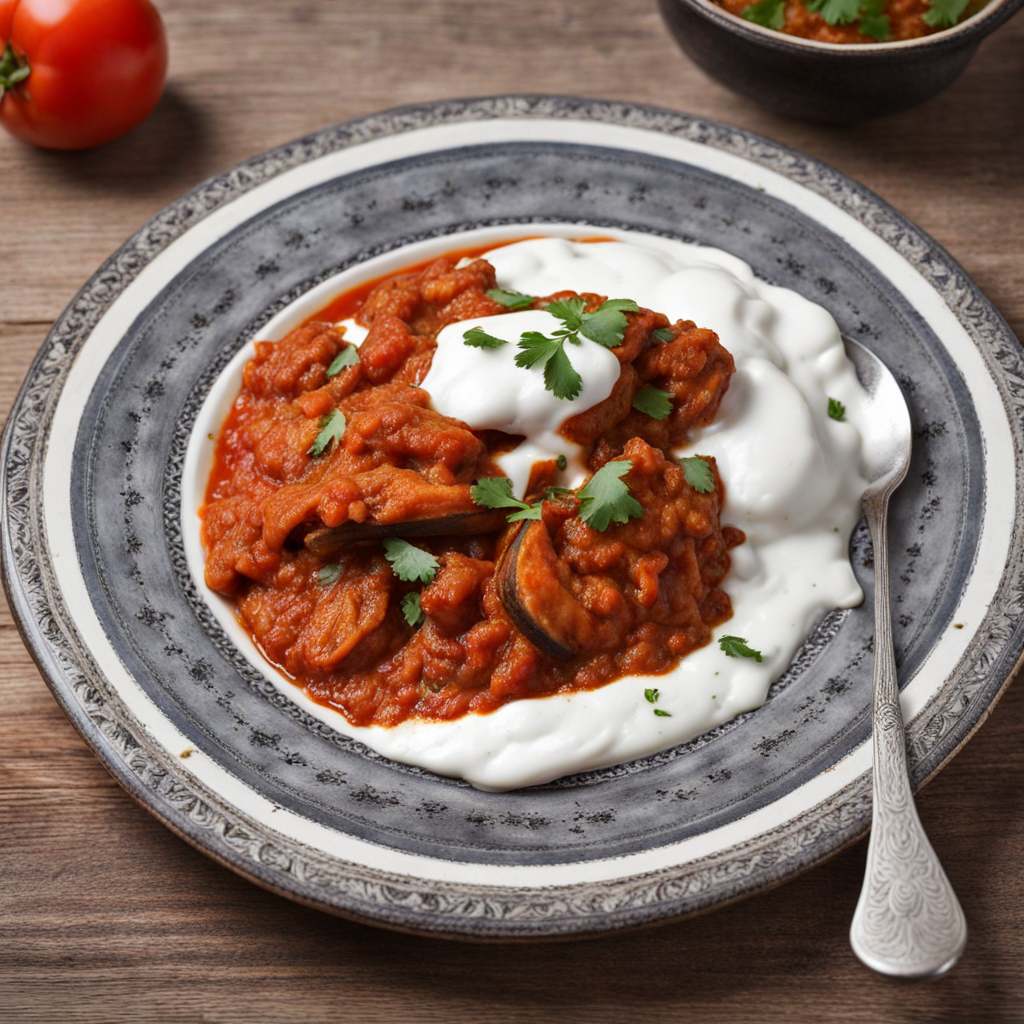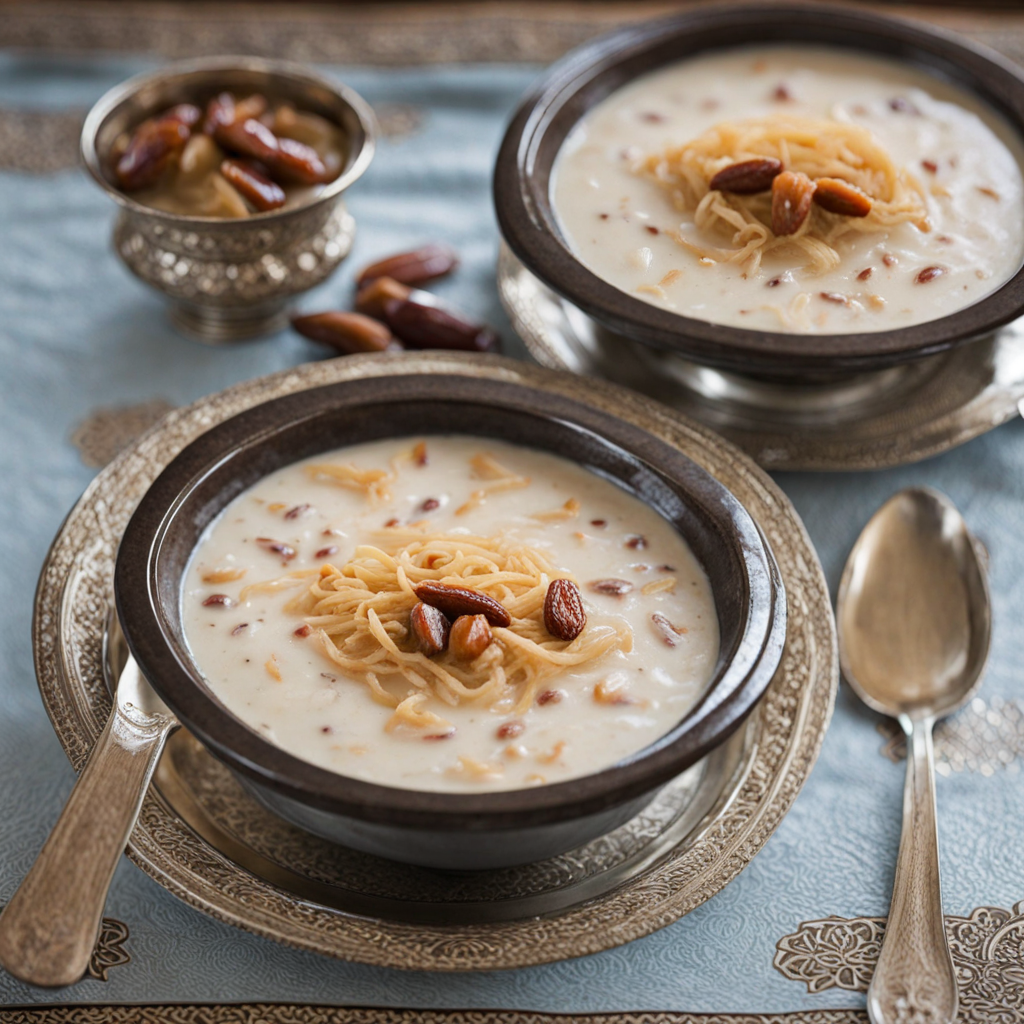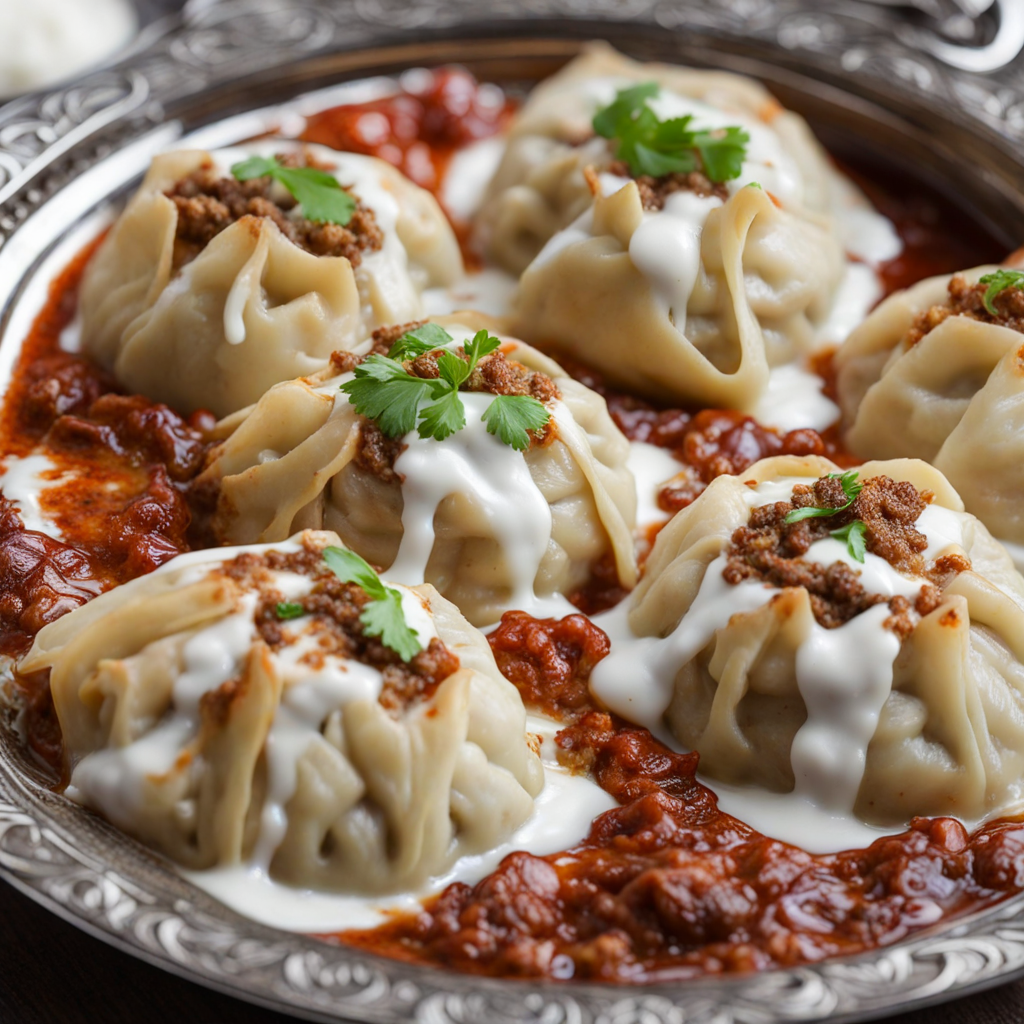Jalebi
Jalebi, a beloved sweet treat from Afghanistan, is a delightful combination of crispy and syrupy textures that is sure to tantalize your taste buds. This traditional dessert is made by deep-frying a fermented batter of flour, water, and a hint of yogurt, which is then piped into intricate spiral shapes. The frying process renders the outer layer golden and crispy while the inside remains soft and airy. Once fried to perfection, these golden spirals are submerged in a fragrant sugar syrup infused with cardamom, saffron, and sometimes rose water, adding a fragrant and aromatic touch to this indulgent delicacy. Upon first bite, you'll be met with a satisfying crunch that gives way to the sweet and syrupy interior, creating a harmonious contrast that keeps you coming back for more. The vibrant orange hue of Jalebi is visually striking, and it often garners attention during festivals and special occasions, where it is served as a symbol of joy and celebration. The syrup not only sweetens the dish but also adds a luscious quality that enhances the overall experience, making it a delightful treat to savor with your loved ones. Jalebi can be enjoyed at any time of day, whether as a breakfast item paired with a cup of tea or as a dessert following a hearty meal. Its unique blend of textures and flavors makes it a versatile choice that appeals to a wide range of palates. In Afghanistan, Jalebi is not just a sweet dish but a cherished tradition, often made at home or enjoyed from local vendors, where the aroma of frying batter and sweet syrup fills the air, inviting everyone to partake in this delightful experience.
How It Became This Dish
Origin of جلبی جلبی, pronounced "jalebi," is a beloved traditional sweet treat in Afghanistan, with roots tracing back to ancient culinary practices. The origins of this delicacy can be linked to a blend of Persian and Indian influences, often believed to have been introduced to the region during the period of the Silk Road trade. This trade route not only facilitated the exchange of goods but also fostered a rich cultural interchange, allowing culinary traditions to evolve and intermingle. The primary ingredients of جلبی include wheat flour, water, sugar, and food coloring, which contribute to its distinctive golden hue. The batter is prepared through a simple process: mixing the flour with water to create a smooth consistency. The batter is then poured into a special piping bag or a squeeze bottle, allowing artisans to create intricate, spiral shapes when deep-fried in hot oil. Once fried to a crisp, the جلبی is soaked in sugar syrup, further enhancing its sweetness and giving it a glossy finish. \n\n Cultural Significance In Afghanistan, جلبی holds a special place in the hearts of many, often associated with festive occasions and celebrations. It is a staple during gatherings, weddings, and religious holidays such as Eid. The sweet is not merely a treat but also symbolizes joy, hospitality, and community bonds. Families often prepare جلبی together, making it a social activity that brings people closer and fosters a sense of togetherness. Moreover, the preparation and serving of جلبی are steeped in tradition. Street vendors can be seen frying the spirals of dough in bustling markets, where the sweet aroma wafts through the air, enticing passersby. This communal aspect of enjoying جلبی highlights the importance of food in Afghan culture as a medium for connection and celebration. It is common for families to share جلبی with neighbors and friends, reinforcing social ties and fostering a sense of community. \n\n Regional Variations As جلبی traversed various regions and cultures, it underwent numerous adaptations. In Afghanistan, it has maintained its classic form, while neighboring countries have added their unique twists. For instance, in India, جلبی is often thicker and sometimes includes a hint of cardamom or saffron, imparting different flavor profiles. In contrast, in Pakistan, variations like "imarti" are also popular, showcasing the diversity of this beloved dessert. The Afghan version of جلبی is distinct for its bright orange or yellow coloring, achieved using natural or artificial food dyes. This visual appeal makes it particularly attractive during celebrations, where it is often displayed prominently on dessert tables. The use of sugar syrup is also a hallmark of the Afghan style, ensuring that each piece is indulgently sweet and pleasantly sticky. \n\n Historical Development Over the years, the preparation and consumption of جلبی in Afghanistan have adapted to changing societal norms and economic conditions. During periods of conflict and instability, such as the Soviet invasion in the late 20th century and the subsequent civil wars, the availability of ingredients fluctuated. Despite these challenges, the resilience of Afghan culture allowed جلبی to endure, often being made with whatever ingredients were accessible. In recent decades, there has been a resurgence of interest in traditional Afghan cuisine, both within the country and among the diaspora. As Afghan communities have spread globally, جلبی has often accompanied them, serving as a sweet reminder of home. This has led to an increasing appreciation for Afghan culinary practices, including the artistry involved in making جلبی. Culinary festivals and events held in Afghanistan and abroad often feature جلبی, showcasing its role as a cultural ambassador. Chefs and home cooks alike share their family recipes, preserving the techniques and stories behind this beloved sweet. The internet has also played a role in this revival, with social media platforms facilitating a renewed interest in traditional Afghan sweets among younger generations. \n\n Modern-Day Consumption Today, جلبی is enjoyed not only in homes but also in restaurants and cafes across Afghanistan and among Afghan communities worldwide. It is often served alongside other traditional dishes, providing a delightful contrast to savory meals. In urban areas, it has become a popular snack, with vendors setting up stalls in busy marketplaces and street corners, catering to the sweet cravings of passersby. With the increasing globalization of food culture, جلبی has also found its way into fusion cuisine, where chefs experiment with new flavors and presentations. Some contemporary interpretations include incorporating local ingredients or presenting جلبی in innovative formats, such as in layered desserts or as part of elaborate tasting menus. This evolution reflects the adaptability of Afghan cuisine while honoring its rich heritage. \n\n Conclusion In summary, جلبی is more than just a delicious sweet; it is a testament to the rich culinary history of Afghanistan and the resilience of its people. From its ancient origins to its contemporary significance, جلبی embodies the spirit of celebration, community, and cultural exchange. As it continues to evolve, it remains a cherished symbol of Afghan identity, reminding both locals and the diaspora of the importance of food in fostering connections and preserving traditions. The legacy of جلبی is likely to endure, delighting future generations and serving as a sweet reminder of the past.
You may like
Discover local flavors from Afghanistan


